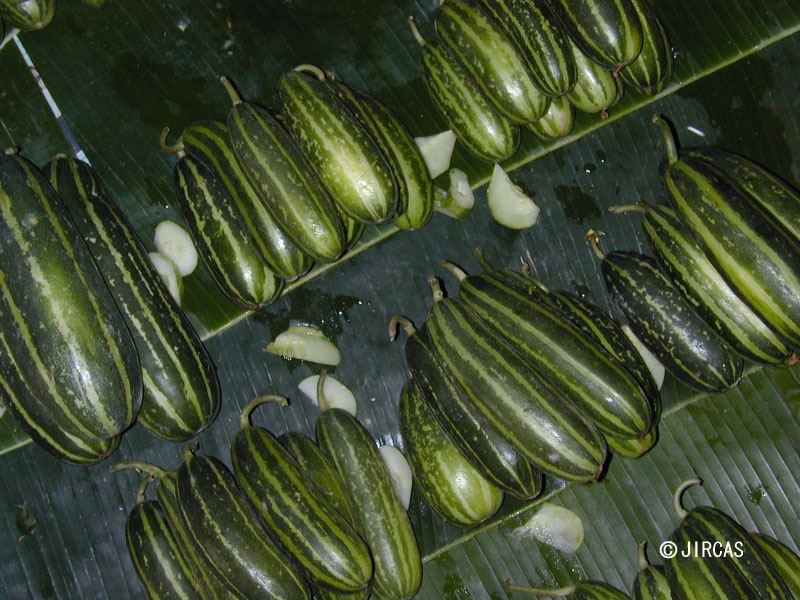Cucumis melo L. (Cucurbitaceae)
- Scientific name
- Cucumis melo L.
- Family name
- Cucurbitaceae
- Common name
- Thai melon (English); makuwa uri (Japanese)
- Local name
- Tang-thai
Herbaceous annual climber. Stem ridged or striate, 1.5–3 m long, all parts hairy. Plant monoecious. Leaves simple, alternate; blade orbicular or ovate to reniform, 5–20 cm in diameter, angular or shallowly palmately 5–7-lobed, base cordate, margins shallowly sinuate, toothed; surfaces hairy; petiole 5–10 cm long. Tendrils unbranched. Flowers axillary, either staminate and clustered (2–4 together), or pistillate or hermaphrodite and solitary; yellow; calyx 5-lobed; corolla deeply 5-lobed; stamens 3; ovary inferior, 3–5 carpels. Fruit a pepo, variable in size and shape, globose to oblongoid, smooth or furrowed; rind smooth to rough and reticulate, white, green, or yellow; flesh yellow, pink, orange, or white. Seeds numerous, compressed elliptically.
Propagated only by direct seed sowing, at a spacing of 2 × 2 m. Thrive in moist, well-drained soil, under full sun.
Cultivated for its mature fruits, which are eaten fresh. Young fruits are available year-round, and occasionally eaten as vegetables, either raw or cooked in sour curries.
Cultivated for its mature fruits, which are eaten fresh. Young fruits are available year-round, and occasionally eaten as vegetables, either raw or cooked in sour curries.




